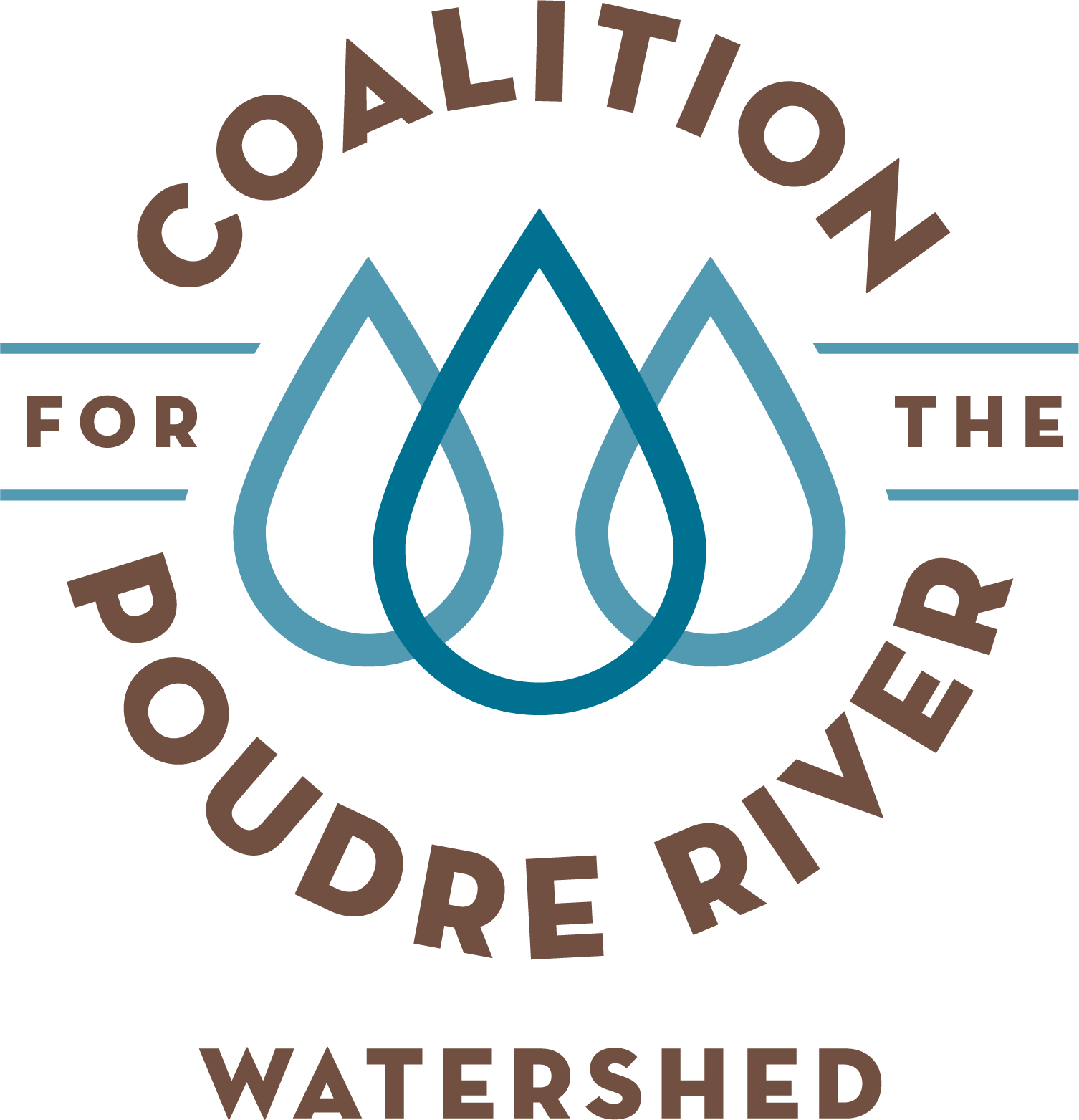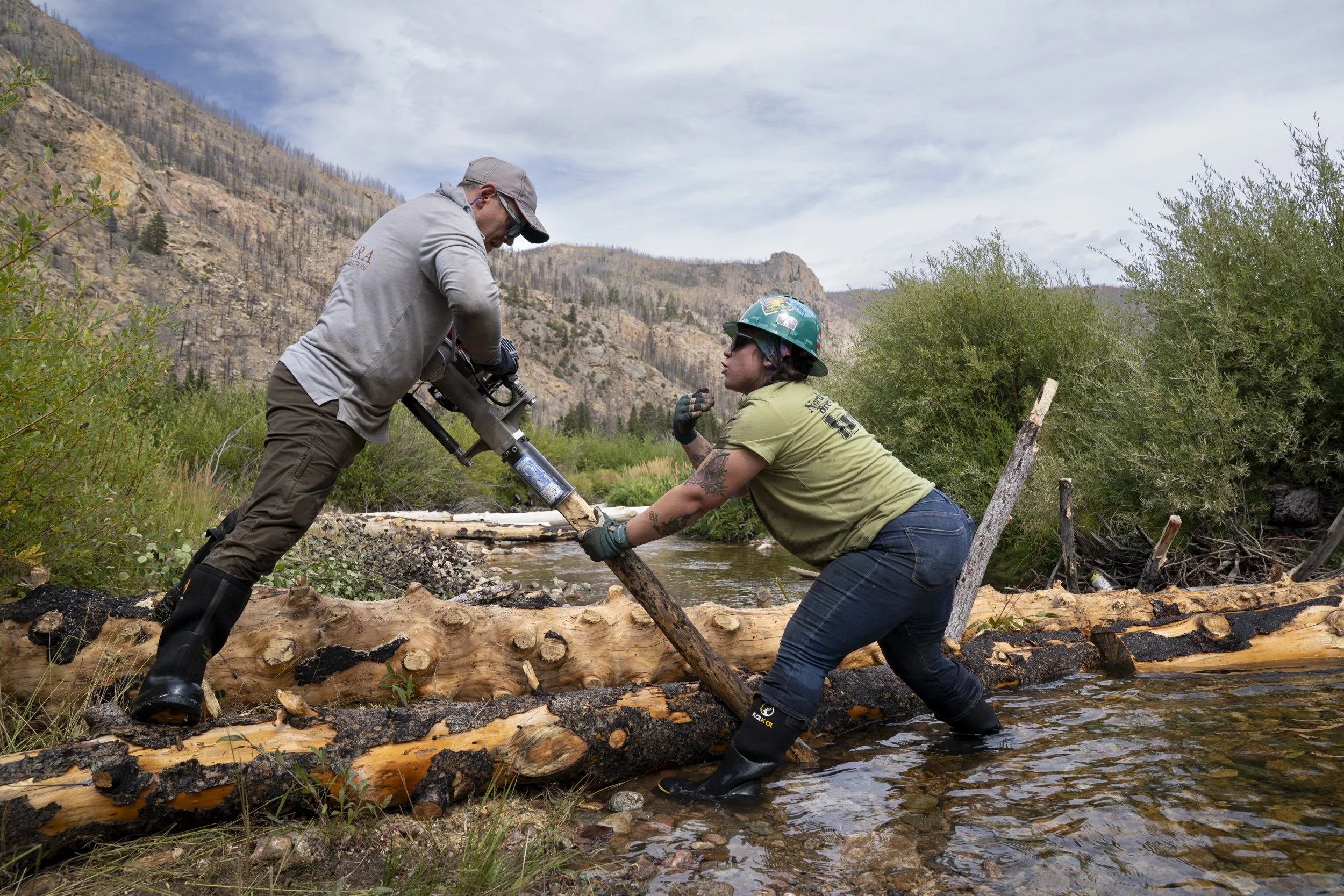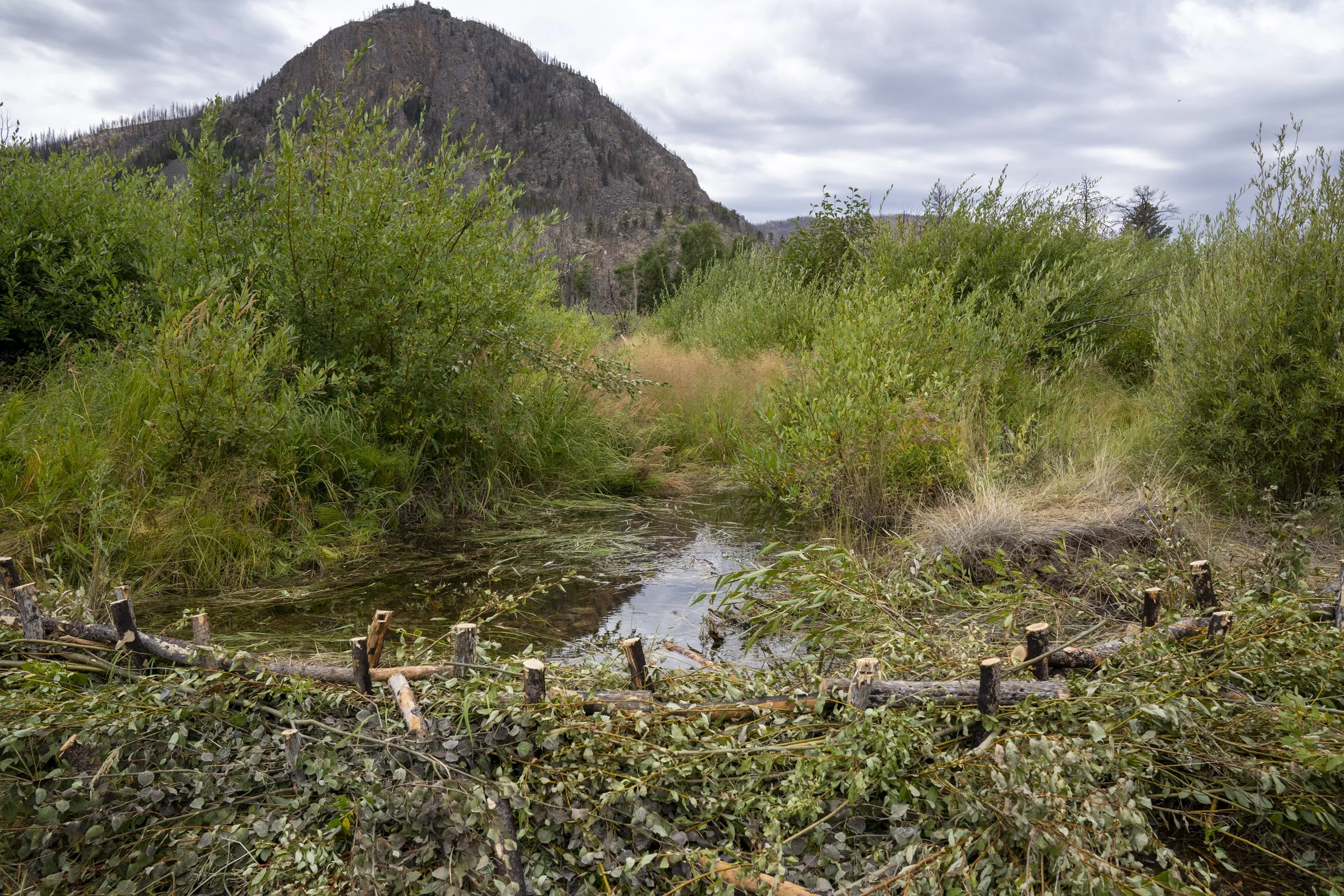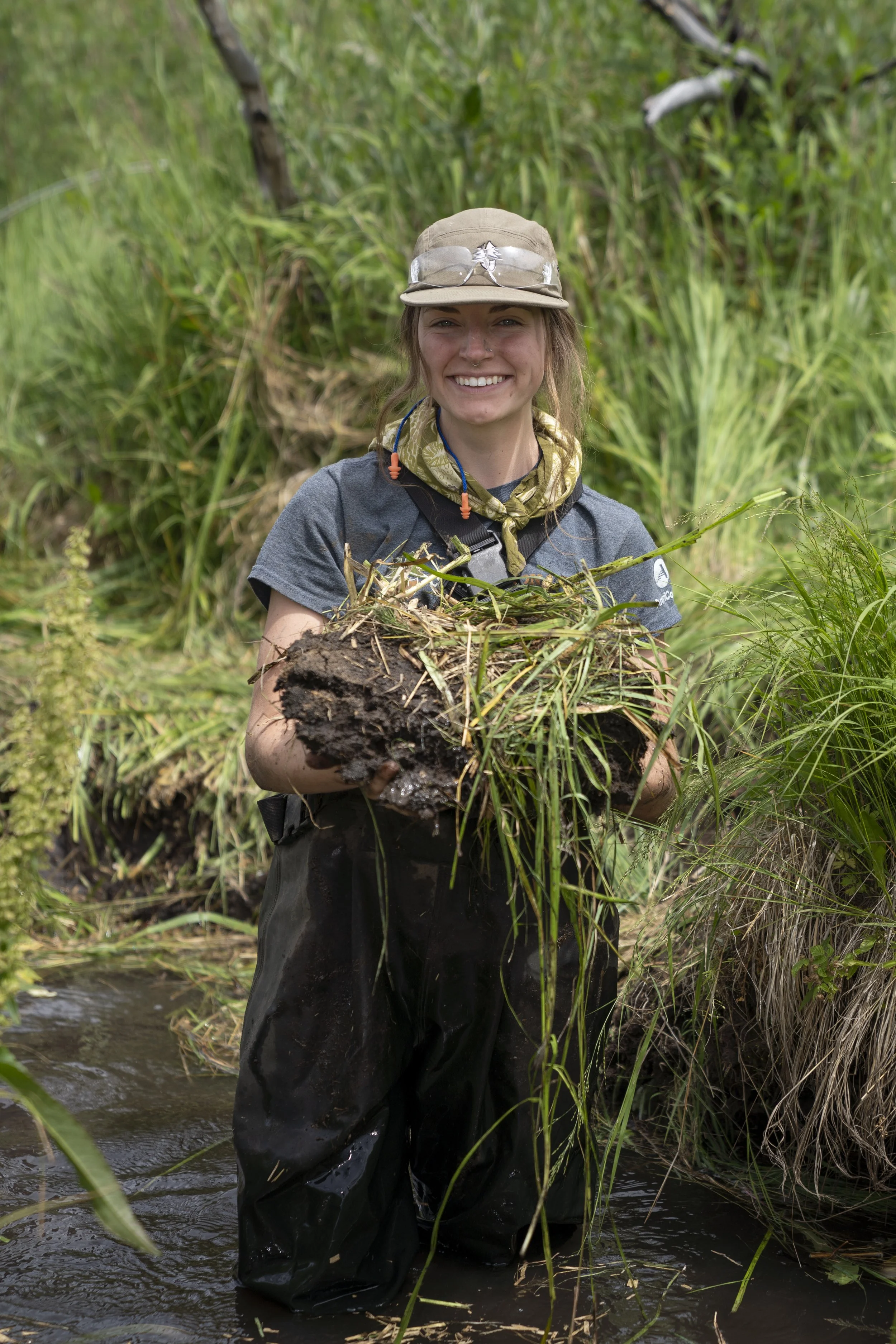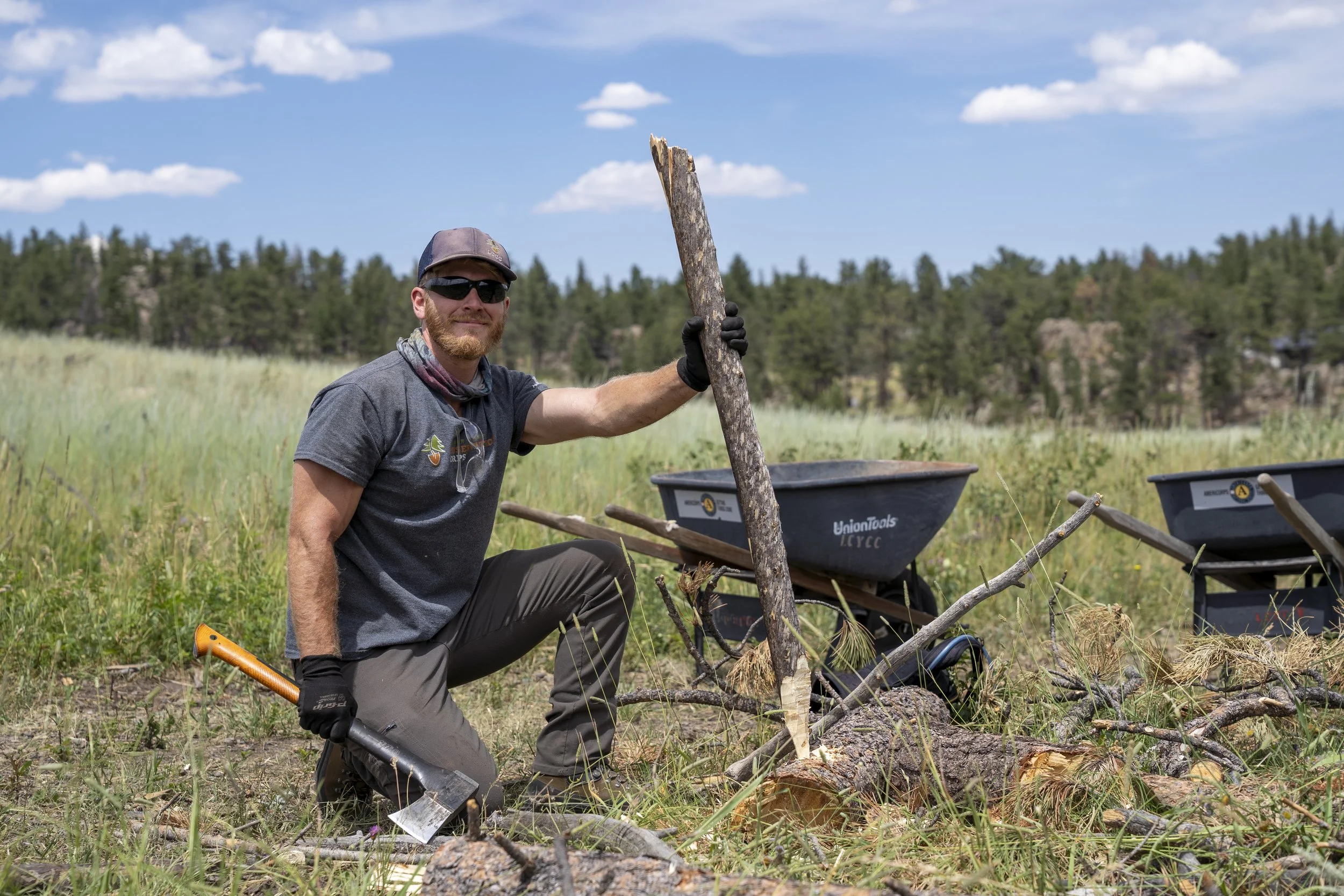Building Resilience, One Stream at a Time: CPRW’s 2025 Post-Fire Instream Restoration Season Recap
by Taryn Contento, Post-Fire & Rivers Project Manager
Thanks to many great partnerships across the public and private sector, and across land boundaries, CPRW’s 2025 post-fire instream restoration season was a great success! This year CPRW and partners completed three projects: Lower Elkhorn Creek, Elkhorn on the Richarz, and Sleeping Elephant on Sheep Creek. In total crews constructed: 5 Log Structures, 29 BDAs, 53 PALS, and 26 willow wattles. Using process-based restoration techniques, these instream features were strategically placed to encourage surface and groundwater flow into historic alluvial flow paths whenever possible. In channel features will contribute to sediment deposition, nutrient uptake, and channel complexity while increasing wetland and aquatic habitat value.
Two of these projects were on private property and one was located on Forest Service property. All of these sites are known (through the landowners and historical imagery) to have had beaver activity in the not-too-distant past. We are looking forward to the outcomes next year to see who (beaver!?) might join us in restoring stream habitat following the Cameron Peak Fire.
Crew members with AloTerra Restoration Services build post-assisted log structures (PALS) on Elkhorn Creek. (Photo credit: Evan Barrientos)
A deep connection to the land
One of our project sites, Sleeping Elephant, has been a treat to be involved in because of the families' long history on the land. While talking with family members and walking the site, it is incredible to hear about the generations of connection to the property and the families’ investments in improving the health and resilience of the stream. It brings CPRW so much fulfillment to not only improve the landscape after high severity wildfire, but to also see how that directly impacts the people connected to this land. Plus, it is an added bonus when they are fellow beaver believers! Of the project, Jon Morgan said:
We feel incredibly fortunate to have partnered with the Coalition for the Poudre River Watershed on the restoration project at our property following the Cameron Peak Fire. From the very beginning, Taryn and the CPRW team took the time to educate us about the river, streams, and local wildlife, helping us understand how these beaver-mimicking structures would restore habitat and improve stream health. The wildlife and the river are so important to us and to the health and vibrancy of our entire community. It’s wonderful to know that projects like this exist, and we’re proud to be part of creating a more resilient watershed for future generations. We can’t wait to see how the landscape transforms over the coming years. Go beavers!
Crews use a post pounder to drive logs into the river bed, saving a huge amount of time and energy during the construction of PALS.
A post-assisted log structure built on Sheep Creek, a tributary to the main stem of the Poudre River. PALS provide opportunities for sediment storage behind the structures while promoting floodplain connectivity, additional wood recruitment, and riparian health.
150 Elephant’s Worth of Sediment
After a wildfire it is common to see significant increases in runoff, which in turn create increased sediment and nutrient inputs from burnt hillslopes to these streams. This change in hydrology can degrade water quality and aquatic habitat. Low-tech process-based restoration (LTPBR) techniques, such as beaver dam analogs and post-assisted log structures, help streams naturally capture and store sediment. By slowing water flow, these structures allow sediment to settle and rebuild degraded channels, raising streambeds and reconnecting them with their floodplains. This process improves soil moisture, supports riparian vegetation, and creates diverse habitats for wildlife. Over time, vegetation growth stabilizes the accumulated material, making the system more self-sustaining. In post-fire landscapes, sediment retention also helps reduce downstream sediment loading and supports faster recovery of stream and riparian ecosystems.
We have run the numbers and the sediment capture from our past projects is quite impressive! Since 2021 our projects have captured over 750 tons of sediment in the stream channel - that’s over 150 full sized elephants in weight! If you are a spatial person that would be around 16,700 cubic feet of sediment or 49 dump trucks full of sediment.
Paring forestry and stream restoration work
This season - for the first time ever! - CPRW and Larimer County Conservation Corps (LCCC) used woody biomass from nearby wildfire mitigation projects to construct some of the instream structures. Demonstrating paired forestry and stream restoration treatments in both burned and unburned areas helps build resilience across the greater Poudre River watershed. It also highlights the value of integrating these approaches to maximize the benefits of forest management, stream restoration, and local wood product utilization. Plus, LCCC crew members gained new skills as they worked side-by-side AloTerra to construct LTPBR structures.
Larimer County Conservation Corps (LCCC) received hands-on training using low-tech, process-based restoration techniques.
LCCC crew members paired wildfire mitigation work with in-stream restoration, using wood from thinning projects to build instream structures.
2026 Post-Fire Restoration Plans
Looking towards 2026 we are planning to implement a project that has been in the works for the last few years – Zimmerman Dam on Sheep Creek – that requires a 2-mile hike in for access. We will be relying on some strong legs to get this remote work done! In addition, two additional projects are slated for Elkhorn Creek. A mile long project, downstream of our project sites completed in 2025, will start in 2026 and another along the Ben Delatour Scout Ranch will be completed with our partners at the Larimer Conservation District. These two projects will contribute to the landscape level approach we have been working towards in the Elkhorn watershed. That would be a total of 6 completed and planned projects along Elkhorn! The fourth project is located in the Laramie River Valley.
Collaboration key to success
This work would not be possible without collaboration in all aspects of these projects. From planning, to design and permitting, to fundraising, construction, and research, there are so many partners we must thank: Ayres Associates, US Forest Service, Larimer County Conservation Corps, AloTerra Restoration Services, private landowners, the Colorado Water Conservation Board, the Colordao Department of Public Health & Environment, Colorado State University researchers, Rocky Mountain Research Station
Thanks for all your interest and support - stay tuned for updates about how you can get involved in 2026!
Photography by Evan Barrientos.
